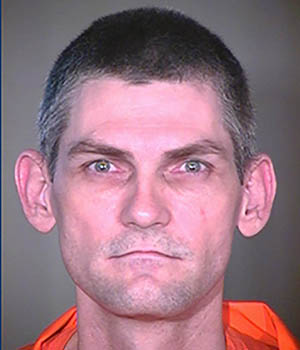
A panel of the 9th U.S. Circuit Court of Appeals rejected most of death row inmate Charles Hedlund’s arguments, but agreed that the judge in his case did not consider mitigating circumstances properly when imposing the death sentence. (Photo by Ken Lund/ flickr via CreativeCommons)
WASHINGTON – A federal appeals court ordered a new sentencing hearing Friday for an Arizona death row inmate convicted in the 1991 Valley murders of two people during the course of a burglary spree.
A panel of the 9th U.S. Circuit Court of Appeals ruled that the Arizona Supreme Court did not properly weigh mitigating factors when it upheld Charles Hedlund’s death sentence for the murders of Jim McClain and Christene Mertens.
The court rejected a slew of other challenges raised by Hedlund, who was convicted with James McKinney in the deaths of McClain, who was shot in the back of the head while sleeping, and Mertens, who was beaten, stabbed and shot.
McKinney – Hedlund’s half-brother – had his death sentence overturned by the same court in December using the same arguments about mitigating factors, a ruling that figured heavily in Friday’s decision.

Charles Hedlund, sentenced to death for two murders during a 1991 burglary spree, had his death sentence overturned on the same grounds as his co-defendant, James McKinney. (Photo by Arizona Department of Corrections)
Hedlund’s attorney, Paula Harms, said she was “very pleased” with the decision reversing Hedlund’s “unconstitutional death sentence.”
“After his brother obtained release on the same issue in December, it is really only fair and logical that Mr. Hedlund received the same results,” Harms said.
The Arizona Attorney General’s Office said through a spokeswoman that it could not comment on the case.
Court documents said McKinney and Hedlund were plotting a string of burglaries when, in early 1991, McKinney “boasted that he would kill anyone who happened to be home during a burglary” and Hedlund said “anyone he found would be beaten in the head.”
Accomplices directed them to Mertens’ home, where they said McKinney and Hedlund would find large amounts of cash. Hedlund and McKinney broke into Mertens’ house on Feb. 28, 1991, but were scared away when she returned home early.
The two committed other burglaries over the next several days before returning to Mertens’ home March 9, when she was home alone. This time, they beat and stabbed Mertens and eventually shot her in the back of the head, before making off with $120 from her house.
On March 22, the two climbed through an open window in McClain’s house, where they shot the sleeping 65-year-old in the back of the head with Hedlund’s sawed-off rifle. They stole a pocket watch, three handguns and McClain’s car, according to court documents.

In rejecting Charles Hedlund’s death sentence, the appeals court pointed to its earlier decision on his co-defendant, James McKinney, above. (Photo by Arizona Department of Corrections)
After their arrests, the two were each indicted on two counts of first-degree murder and four other counts related to the robberies, according to court documents. They were tried together, but before separate juries, in the same courtroom where both men wore leg shackles after a report that they might try to escape.
Defense attorneys objected to the dual juries and to the shackles, which they charged would bias the jury. Hedlund’s trial attorney also tried to get the judge to recuse himself, claiming Hedlund felt the judge was biased against him. And they tried to remove a juror who learned she was a distant relative of McClain.
All those objections were rejected, and the two were found guilty on Nov. 12, 1992, with Hedlund convicted of the first-degree of McClain and second-degree murder of Mertens. Both men were later sentenced to death.
At sentencing, Hedlund argued that a history of childhood abuse, alcoholism, post-traumatic stress disorder, a low IQ and other factors mitigated against imposition of the death penalty. But the trial judge imposed a death sentence.
That sentence was upheld by the Arizona Supreme Court, which rejected arguments that the trial judge had unconstitutionally failed to consider the mitigating factors because there was no causal link between them and the actual crime.
But the appeals court panel disagreed Friday, citing the full circuit court’s decision to reverse McKinney’s sentence.
“Because we are bound by our court’s decision in McKinney, we follow its conclusion that the Arizona Supreme Court applied the unconstitutional causal nexus test in affirming Hedlund’s sentence,” Judge N. Randy Smith wrote for the court.
Harms said the rulings in Hedlund’s and McKinney’s cases recognize that Arizona courts had long required that mitigating factors must be connected to the crime to be considered, a practice ruled unconstitutional by the U.S. Supreme Court.
In a partial dissent, Judge Kim Wardlaw said she would have upheld Hedlund’s challenge to his being shackled during trial, and would have agreed with his claim that he had ineffective counsel during his plea process and sentencing.
In a grudging concurrence, Judge Carlos Bea said he disagreed with the McKinney ruling but his hands were tied, since the full 9th Circuit had already ruled that McKinney deserved a resentencing.
“My agreement on this point should not be construed as a concession that McKinney was correctly decided. It was not,” Bea wrote. “But, I recognize that, as a three-judge panel, we are bound to follow McKinney until it is overruled by the Supreme Court or a future en banc panel of our court.”